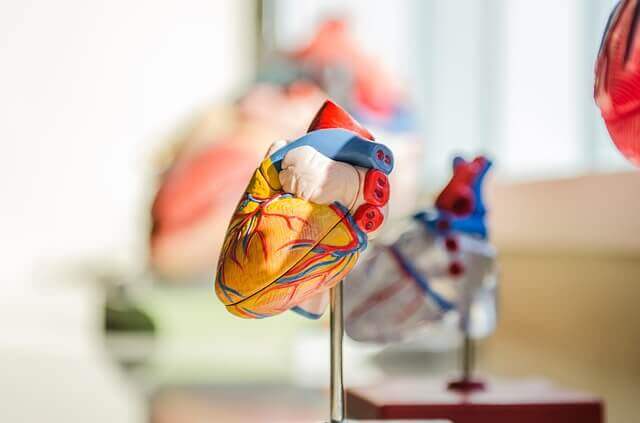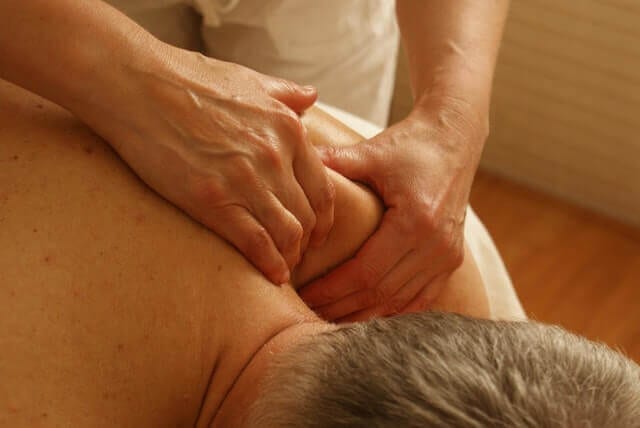Painful knees and swollen fingers are just impossible to ignore, but add your skin, eyes, lungs, liver, etc. to the list of body parts affected by arthritis and the equation becomes a lot more complicated. Doing the easiest things such as lifting thin items like a toothbrush, or pressing the button on your TV remote can become a struggle.
Arthritis is one of the most misunderstood diseases, which can make matters worse. Understanding how the human body suffers from the effects of the hostile condition, making subtle changes in your lifestyle, and taking regular medication can make life a lot easier.

How arthritis impacts your body and how to counter it
Different parts of the human body are affected in different ways by arthritis. Moreover, the drugs to treat the condition may also have side-effects on your body.
Joints

While there are many types of arthritis, it’s mostly the inflammation of the joints. It not only causes a lot of pain but also impacts mobility and your ability to do daily tasks. Walking around and picking up lightweight items can become hard. Regular exercise, ease-of-use tools, medication, and keeping weight under control can take the extra stress off your joints.
Bones

Chronic inflammation can decrease bone density throughout the body, making the bones thin and brittle. Taking high calcium diet, consuming vitamin D, and doing regular exercise can be helpful, however, you should consult your physician for additional medication to stimulate bone growth.
Skin

Arthritis can cause nodules and rashes on the skin. Nodules or lumps are pretty common and almost 50% of people who have arthritis get them under the skin, often right over the bony area. Normally treatment isn’t necessary, and nodules will disappear on their own. However, if they’re in sensitive areas or impair your ability to drive, hold a pen, etc., they can be treated with disease modifying antirheumatic drugs. Rashes, on the other hand, are caused by inflammation of the blood vessels and appear in the form of small red dots. Controlling the underlying inflammation is the only way to treat these rashes.
Eyes

Although not every common, inflammation of whites of the eye may occur in some patients. In severe cases, the inflammation can lead to scarring and permanent damage. The symptoms include pain, redness, and blurred vision. Immediate medical help is recommended if any of these symptoms appear.
Heart

Chronic inflammation can gradually damage endothelial cells, which causes the blood vessels to absorb more plaques and cholesterol than usual. These plaques can damage blood vessels and even block a vessel, that may lead to a stroke or heart attack. A Swedish study published in 2010 confirmed that people who have rheumatoid arthritis are at a 60% higher risk of getting a heart attack.
Lungs

About 80% arthritis patients have mild lung issues which are not too severe and usually don’t even show any symptoms. Pulmonary fibrosis is the only known disease caused by prolonged inflammation that is complicated and hard to treat. Nodules may also form in the lungs, but they usually disappear on their own and are harmless.
Managing the hurdles caused by arthritis
Medication

A wide variety of drugs – both prescription and over-the-counter – are available to treat arthritis. Always check with your physician before using any medication. For information purposes, here are a few of the most commonly used medicines to treat arthritis.
- Analgesics: Tylenol and Vicodin are used for pain management, though they don’t decrease inflammation.
- Aspirin: Available without a prescription and used for temporary pain relief but may not reduce swelling.
- Capsaicin creams: Topical creams with natural ingredients like menthol and capsaicin can alter the pain sensations in affected joints and diminish the signals sent back to the brain.
- Corticosteroids: Used in case of severe pain and swelling, they can be given orally or by injection for instant relief. However, prolonged use can weaken bones and cartilage beside other side effects and must be given under a doctor’s supervision.
- Immunosuppressant: Cortisone, prednisone etc. can help alleviate inflammation.
- Nonsteroidal anti-inflammatory drugs: Helps control pain and inflammation. Be careful as they can also thin the blood.
- Sleep medication and disease modifiers: Sleep medication is used to promote deeper sleep and relax muscles, while disease modifiers can slow down the disease. Both of these are available only by prescription.
Exercise

Regular exercise is crucial in keeping you independent and on your feet. It lessens pain, reduces fatigue, and increases movement. Plan your workouts when you don’t feel too stiff, start slowly and build the time and intensity without putting too much pressure on the joints. If you feel pain, dizzy, or short of breath, stop exercising right away and lower the time/intensity next time. Three major types of exercises are recommended for arthritis patients.
- Range of motion exercises: Stretching or flexibility exercises can keep your joints flexible and reduce stiffness. They’re done by gently bending and then straightening joints without overstretching to the point where it feels uncomfortable. Should be done daily.
- Strengthening exercises: Used to strengthen muscles, which indirectly can make our joints stable. These exercises should be done three to five days a week.
- Endurance exercises: Can help keep your heart healthy and your weight under control. They can be done for 20-30 minutes, three times a week.
Physical therapy

Therapy usually involves strengthening muscles around the affected joints and is a vital part of the overall treatment plan.
Surgery
In some cases, surgery is done to replace hips, knees, and other joints with artificial ones. However, if you’re having trouble with your fingers or wrists, the physician may prefer joint infusion. The procedure involved locking your bones together for a certain amount of time until they become one.
Doing household chores with arthritis
Little changes in the way you do your home tasks can immensely decrease the stress on your joints.
Lift smart, lift better
Move the heavier items that you have to lift regularly in your house to more convenient locations where you can either slide them, or minimal lifting is required. For example, you can move heavy items, such as sugar and flour bags, in the kitchen to waist level in the pantry, so you don’t have to bend down or reach over your head. Moreover, swapping heavy dishes and other items with lighter versions can be handy.
There are certain things that you might still have to move around the house. If possible, try to take advantage of wheels. A mop bucket, laundry basket, or grocery bags on the wheels are much easier to move around. Try to carry small loads and avoid carrying anything with your fingers, instead use forearms or shoulders.
Compression and form-fitting products for arthritis
If your job involves standing for extended hours, get gel mats or gel insoles. Try to take the load off your feet, knees, and hips as much as you can. Sit on a short stool instead of kneeling down if you have to bend down to lift items frequently. Knee and elbow support products are also pretty common Since your fingers and wrists are two of the most vulnerable joint, wearing form-fitting gloves can reduce stress and make lifting things a lot easier. If you’re interested in learning more about arthritis gloves, you can get more info here.
Rest and refuel
You might feel fresh and full of energy in the morning, which gradually goes down. But if you try to do too much, too quick, your energy level will nosedive, and you might feel crummy the whole day. Instead, try to divide your tasks through the day and give your body ample rest in between. Eat healthy snacks and stay hydrated.
